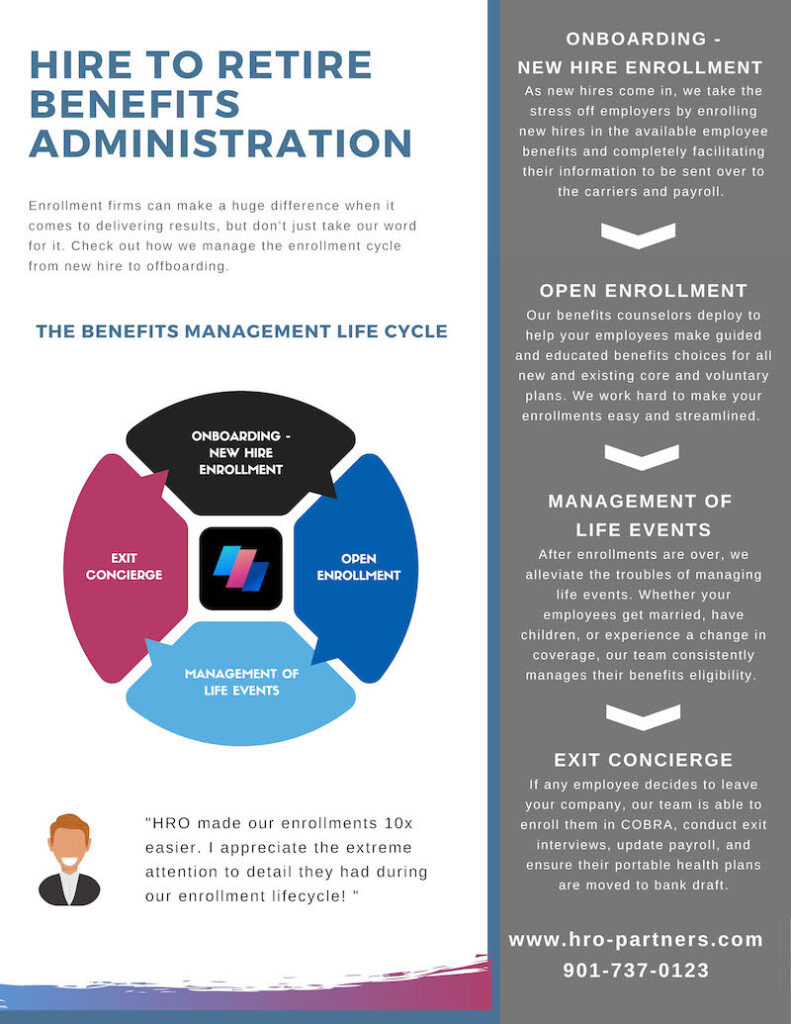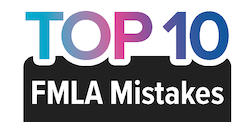Absence Management, or Leave Management, means putting strategies, policies, processes, and procedures in place to reduce employee absenteeism due to illness, injury or similar reasons. Eight in ten employers say that COVID-19 has raised senior leadership awareness of the importance of leave management.
A very complicated component of Absence Management is the Family Medical Leave Act (FMLA), that was signed into law on February 5, 1993. Though the law turned 28 this year, it can still prove to be extremely difficult for employers to interpret. 71% of employers report that making decisions on FMLA requests is a top challenge, up 48% from 2012.
To help HR professionals maneuver the complexities of FMLA, and the increasing compliance and administrative burden, HRO Partners, in partnership with Unum, hosted a webinar, entitled Curbing FMLA Abuse, Top Ten FMLA Mistakes and Suggested Best Practices, presented by Daris Freeman, Assistant Vice President, Legal Counsel, at Unum.
While the following list from Daris is not a Dave Letterman’s Top Ten, it is a Top Ten of FMLA Employer Mistakes, and maybe not as entertaining as Dave’s list, but here goes:
Daris’ Top Ten FMLA Mistakes, and a few Suggested Best Practices:
#10 Failure to monitor intermittent leaves closely
Best practice: Check certifications carefully and monitor absences
#9 Improper use of recertifications
Best Practice: recertify at a minimum of every 6 months; recertify patterns of absence; recertify absences that exceed frequency and duration; recertify if you receive information that questions validity; and utilize clinical resources to determine whether/when to recertify unknown or indefinite conditions.
#8 Failure to request a new certification and redetermine eligibility in a new leave year
Best Practice: Establish the one-year period of eligibility for each leave request/reason; re-evaluate eligibility upon the first absence in the new leave year; request a new certification if the employee continues to be eligible; and authenticate, clarify and request 2nd/3rd options on the new certification as warranted.
#7 Inappropriate use of medical certifications
Best Practice: Use comprehensive medical certification forms; return all incomplete and insufficient certifications to employee; contact medical provider to clarify any answers that you do not understand; do not allow supervisor to contact health care provider; and authenticate all questionable certifications
CAUTION: The employee’s immediate supervisor cannot make contact.
#6 Failure to properly designate FMLA time
Best Practice: If you fail to provide timely designation, you can retroactively designate but you should ask the employee if they relied to their detriment on your failure to designate; If you have a problem with employees taking FMLA in small increments to excuse late arrivals or late return from lunch, adopt leave policies that require that the employees take leave in one-hour increments; and Generally, you cannot make an employee take more FMLA than needed. However, there are exceptions for physical impossibility, i.e., missed flights or trains, clean rooms, etc.
CAUTION: You can only deduct FMLA in 1-hour increments if the employee was not allowed to work for the full hour.
#5 Failure to calculate leave entitlement appropriately
Best Practice: Take care to appropriately determine an employee’s FMLA bank, factoring in the employee’s normal schedule and any required overtime; and review an employee’s FMLA usage to determine if a holiday falls within a full week of FMLA.
#4 Using a calendar year 12-month period
Best Practice: Rolling backward method provides that each time an employee takes leave, the employer looks backward 12 months to determine how much FMLA time the employee has taken; each time an employee takes FMLA leave the remaining leave entitlement would be any balance of the 12 weeks which has not been used during the immediately preceding 12 months; rolling backward method prevents stacking of leave. The calendar method allows for stacking; and under the calendar method, an employee can take 12 weeks of leave at the end of one calendar year and immediately take another 12 weeks at the beginning of the new calendar year.
#3 Failure to provide required notices
Best Practice: Electronic general notice is sufficient but it must be accessible to employees and applicants; if you have a handbook, general notice must be in the handbook, and if no handbook, must distribute upon hire.
#2 “Deeming” employees FMLA eligible
Best Practice: Do not count FMLA absences against an employee unless the employee is eligible, and the absence is covered. If you improperly deduct time from an employee’s FMLA bank, the employee may be entitled to an additional 12 or 26 weeks of FMLA leave; do not treat office locations as covered if there are not 50 employees within a 75-mile radius; and grant a corporate leave if you wish to provide leave in circumstances that are not covered by FMLA (i.e., domestic partners, grandparents, small offices, new employees.
SIMILAR MISTAKE: an additional similar mistake is when employers fail to track FMLA leave because a more generous leave program is available to their employees.
And the #1 FMLA mistake employers make is Improperly determining eligibility.
Best Practice: Make sure you are a covered employer. Verify that you had 50+ employees for each calendar day for 20 weeks in the current or preceding year. Determine that, as of the time the employee requests leave, the employee works at a location where there are 50 employees within 75 miles. Count all employees on payroll (including temps) except expatriates; for work at home employees, look to site in to which employee reports or receives assignments from; verify that the employee worked for 12 non-consecutive months prior to start off leave. Include employment prior to a continuous break in service of 7 years or less, include military service in calculation of tenure and hours worked; Verify that the employee work 1,250 hours immediately prior to the start of leave using FLSA “hours worked” standard and do not include leaves or PTO.
CAUTION: Include temp time in hours worked and tenure for any employee who worked for you as a temp.
If you were unable to attend the webinar and would like to listen to the recording, please email support@hro-partners.com to get a copy of the PowerPoint and to be put on an email distribution list for future webinars.
Tisch McDaniel
Senior Consultant
HRO Partners LLC
Tisch McDaniel | LinkedIn

